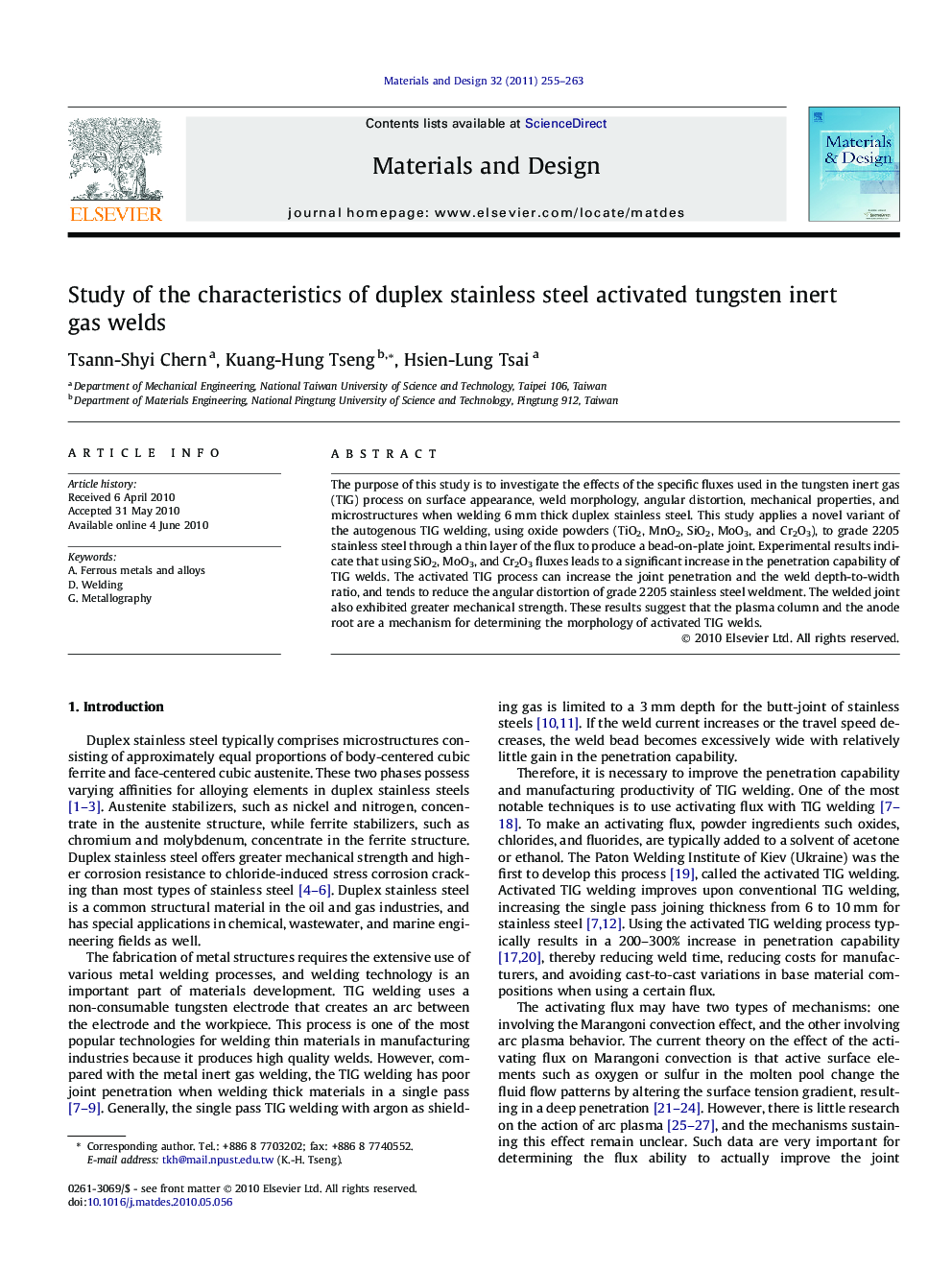| Article ID | Journal | Published Year | Pages | File Type |
|---|---|---|---|---|
| 831718 | Materials & Design (1980-2015) | 2011 | 9 Pages |
The purpose of this study is to investigate the effects of the specific fluxes used in the tungsten inert gas (TIG) process on surface appearance, weld morphology, angular distortion, mechanical properties, and microstructures when welding 6 mm thick duplex stainless steel. This study applies a novel variant of the autogenous TIG welding, using oxide powders (TiO2, MnO2, SiO2, MoO3, and Cr2O3), to grade 2205 stainless steel through a thin layer of the flux to produce a bead-on-plate joint. Experimental results indicate that using SiO2, MoO3, and Cr2O3 fluxes leads to a significant increase in the penetration capability of TIG welds. The activated TIG process can increase the joint penetration and the weld depth-to-width ratio, and tends to reduce the angular distortion of grade 2205 stainless steel weldment. The welded joint also exhibited greater mechanical strength. These results suggest that the plasma column and the anode root are a mechanism for determining the morphology of activated TIG welds.
